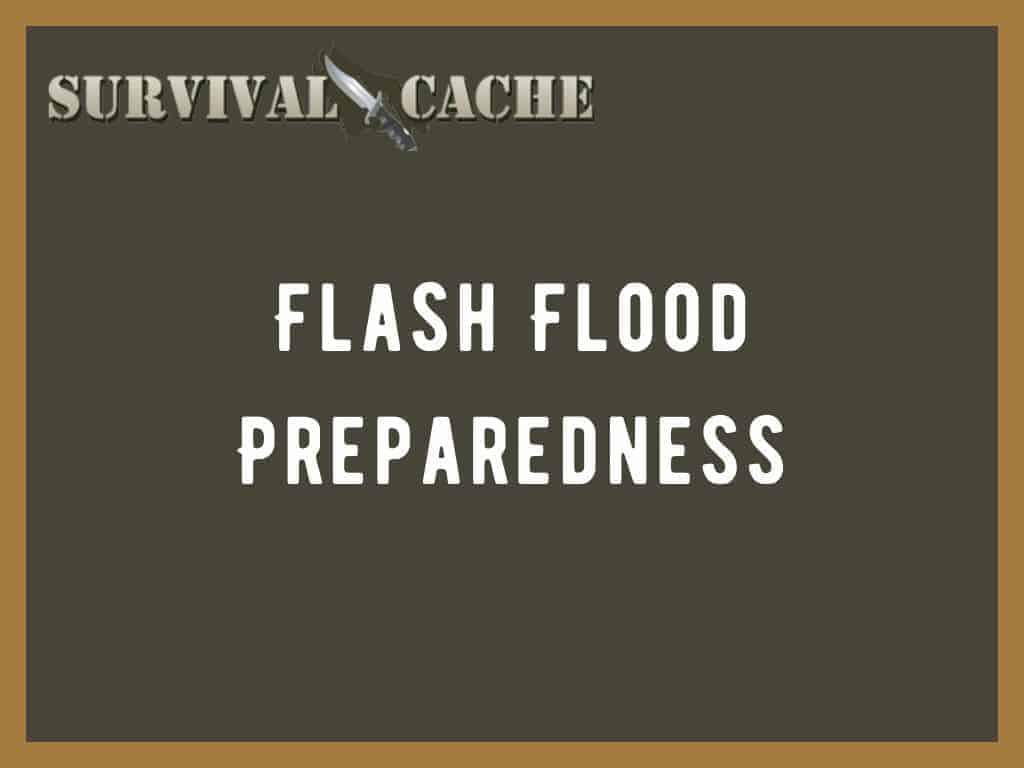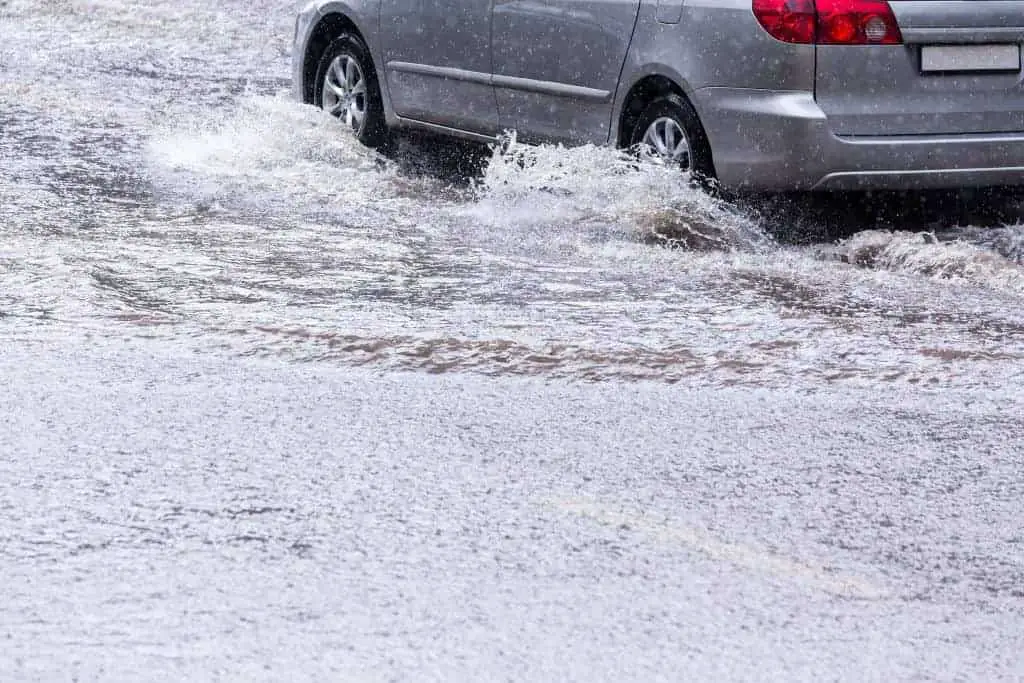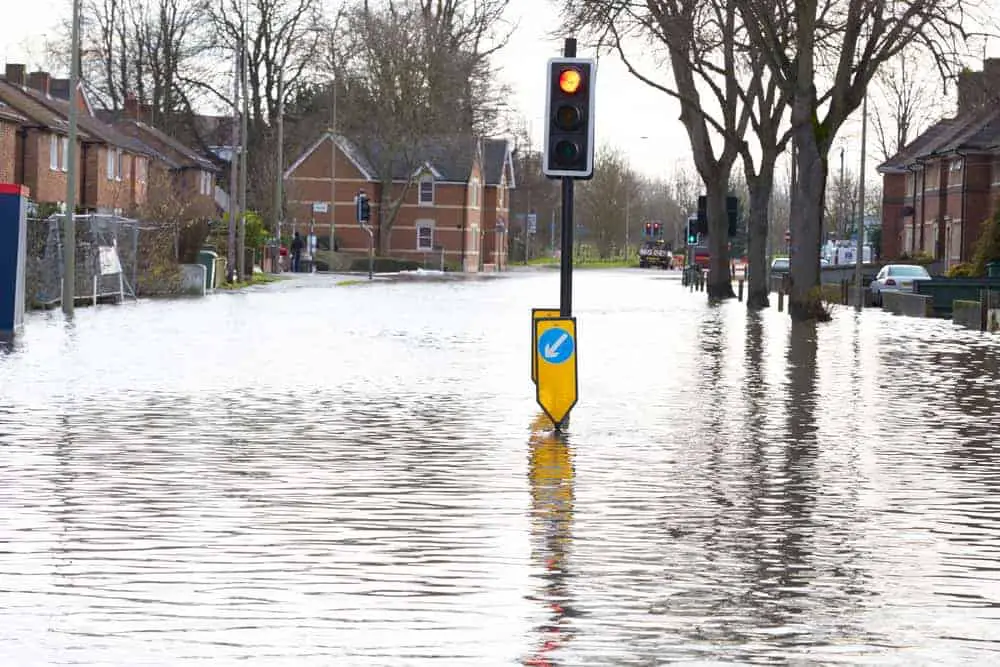Natural disasters are the number one threat that most people should prepare for because they occur almost every year.

Flooding affects millions of people a year along coastal regions and low-lying areas. To an extent, seasonal flooding can be prepared for because of our knowledge leading up to the event.
Flooding and flash flooding do share similarities in their effects. But there is an important distinction between the two that makes flash flooding a more imminent threat, timing.
SKIP AHEAD
Flooding versus Flash Flooding
The following two definitions are from the National Weather Service.
Flood Definition
An overflow of water onto normally dry land. The inundation of a normally dry area caused by rising water in an existing waterway, such as a river, stream, or drainage ditch. Ponding of water at or near the point where rain fell. Flooding is a longer-term event than flash flooding, it may last days or weeks.
National Weather Service
Flash Flood Definition

A flood caused by heavy or excessive rainfall in a short period of time, generally less than 6 hours. Flash floods are usually characterized by raging torrents after heavy rains that rip through riverbeds, urban streets, or mountain canyons sweeping everything before them. They can occur within minutes or a few hours of excessive rainfall. They can also occur even if no rain has fallen, for instance after a levee or dam has failed, or after a sudden release of water by a debris or ice jam.
National Weather Service
Imminent threats of flash floods.
A person can be knocked down in just several inches of fast flowing water. Most vehicles can be swept away in one foot of water and larger vehicles such as trucks can be swept away in two feet of water. Water can be an incredibly powerful force that should not be underestimated. A few of the imminent threats caused by flash flooding include:
- Power grid failure
- Bodily harm
- Property damage
- Infrastructure damage
- Sanitation hazards
- Inability to carry out escape routes.
Flash Flooding in Urban Environments

When flash flooding occurs in urban areas there are several things you can do and should not do to better your chances of survival.
What To Do
- Always stay informed of recent and future whether patterns in your region.
- When an alert for flash flooding goes out you need to respond to it immediately. Have multiple escape routes mapped out including all available modes of transportation.
- Move to higher ground which includes higher levels of a structure.
- Bring pets indoors and keep them in a safe location.
- After the flooding has subsided, take great care in moving about as there will likely be widespread hazards left behind.
What Not To Do
- Do not enter roadways that are closed off. Abide by ROAD CLOSED signs and do not proceed, barricades are in place for your safety
- Do not drive through waters where you cannot see the road. There can be hidden dangers that can threaten the safety of the vehicle and its passengers. I think it bears repeating that it only takes one foot of water to sweep away most vehicles and two feet for larger vehicles like trucks.
- Do not cross bridges. Rivers and streams can be turned into raging walls of water choked with debris. This deadly combination can easily damage or destroy a bridge while you are on it.
- Do not walk or swim in floodwaters. They can have hidden dangers that include wildlife, sharp objects, chemicals, drop-offs, and submerged powerlines.
- Do not leave your safe spot until the official all clear has been given.
- Do not drink municipal water until the official all clear has been given.
Flash Flooding in Wilderness Environments

When flash flooding occurs in the wilderness, there are several things that you can do and should not do to better your chances of survival.
What To Do
- Pay attention to nature’s signs. Things like water marks above a stream or river, or excessive dead debris (trees, logs, roots, vegetation, and mud) covering an area. These can be signs of an area prone to flooding.
- Pay attention to water levels dropping dramatically in a river. This could be a sign of a debris jam or mudslide upstream. These will cause a build up of water behind them that could let loose at any time. If you notice this change in water levels move to higher ground
- If you notice a significant rise in the water level or speeding up of water in a stream or river in a short amount of time, then head to higher ground. Significant rise in water level can be just inches in hours or less.
- Listen to your surroundings. A river or stream that becomes significantly louder can be an indication of a large influx of water heading downstream. Move to higher ground immediately.
What Not To Do
- Do not allow yourself to become boxed in. An example would be walking through a slot canyon without a quick exit available. Or walking along a river where you cannot get to higher ground quickly.
- Do not walk, swim, or boat through fast moving flood waters. Hidden debris such as a log can cause severe injury or death. If you must cross a river wait until the flooding recedes.
- Stay off natural or manmade bridges during flooding. Debris coming downstream could take the bridge out.
- Do not walk closely to a water’s edge during flooding. Shorelines are saturated and can quickly collapse into the river.
- Do not fall into a false sense of security because it is not raining where you are. Heavy occurring rain miles upstream, or snowmelt at higher elevations will continue to travel downstream regardless of the weather in your current location.
- Avoid camping in areas you suspect are prone to flash floods. Along riverbeds, in narrow canyons and other low-lying depressions.
Wrap Up
Underestimating the power of mother nature is a battle that is always lost. Whether you are in an urban setting or in the wilderness it is essential to know the signs of flash flooding and what to do as well as what not to do.

